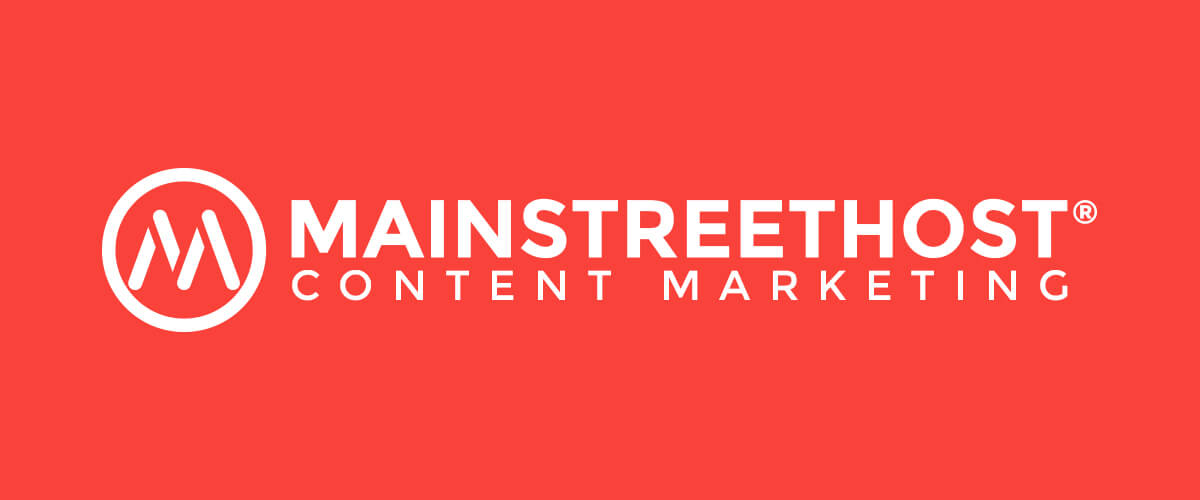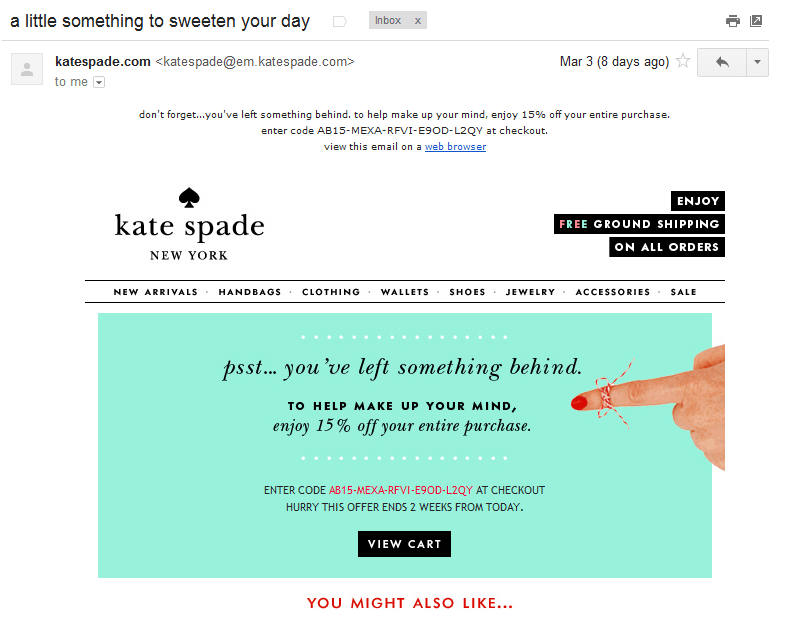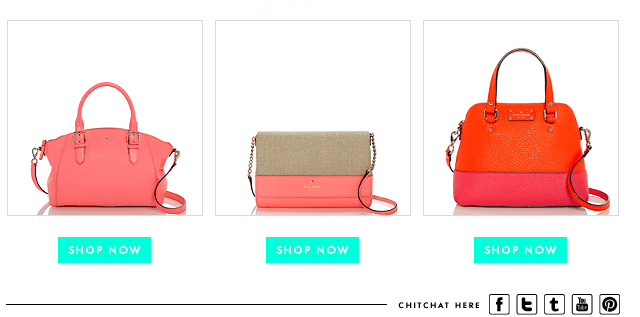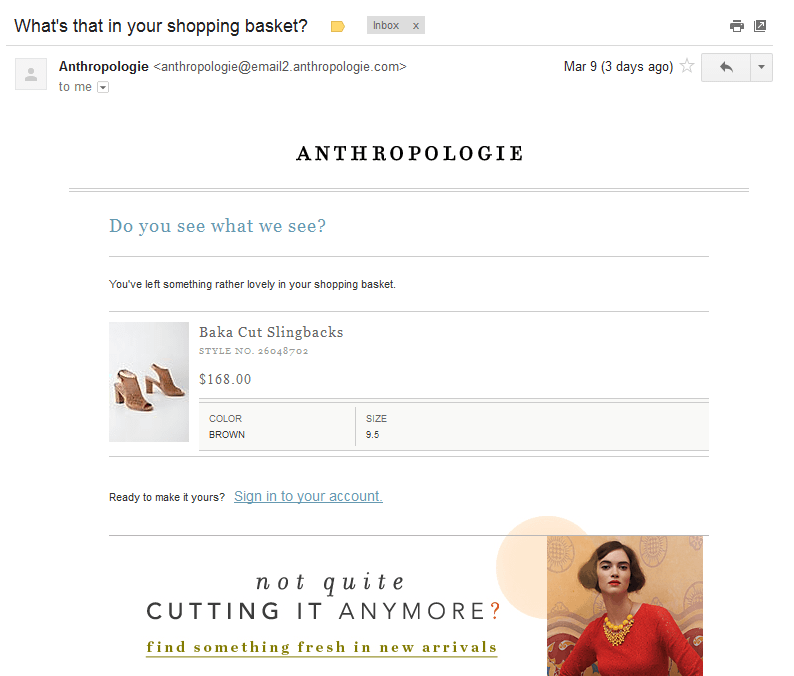Ask a business owner with an e-commerce website one of his or her greatest concerns, and three words will come up: shopping cart abandonment. The majority of people abandon their shopping carts, and the average shopping cart abandonment rate is approximately 67%.
One way to prevent shopping cart abandonment is to send emails to remind customers of the items in their cart. A study by Internet Retailer looked at Movies Unlimited, a site that emailed shoppers 24 hours after they abandoned a cart. Shoppers were able to buy the items, save the cart for future purchase, or clear the cart. In the first three weeks of the campaign, Movies Unlimited saw a 1.5% lift in purchase transactions, and it attributed that lift to recapturing sales from abandoned carts.
I recently received two reminders from two different retailers, both trying to prevent me from abandoning my shopping cart. I’ve received emails of this kind before, but these two stood out. Here’s why.
Email One
A week after I put a pair of shoes in my shopping cart at Kate Spade, I received this email. It gives a code for a 15% discount off my purchase and tells me about free ground shipping on all orders.
The discount immediately stood out to me (and inspired me to write this post). It’s also a proven tactic: according to a study from the e-tailing group, 56% of people say coupons and rebates are critical in their decision to purchase. The discount is also a great example of surprise reciprocity: it gives me an unexpected positive experience and it temporarily boosts my mood. This works from a consumer perspective (I get to buy the item at a discounted price) and a brand perspective (in the short term, Kate Spade prevents me from abandoning my shopping cart, and in the long term, I’ll remember the unexpected positive experience whenever I think or talk with others about the brand). Kate Spade gives me two weeks to use this discount – enough time so I don’t feel rushed, but not too much time that I forget about the purchase.
The free-shipping reminder is important too. The same study from the e-tailing group found that free shipping is the most important factor in the consumer decision-making process: it’s critical for 73% of people. And according to a Compete Online Shopper Survey, 93% of people said free shipping would encourage them to buy more products online. (Free shipping also increases customer satisfaction: high shipping costs are rated as the number one reason why consumers aren’t satisfied with their online shopping experience.)
The email also makes the purchasing process easy; it lets me go directly to my shopping cart. It also offers me other products I might like and includes clear calls to action that take me directly to the specific product pages.
Email Two
Anthropologie sent me this email 24 hours after I placed an item in my shopping cart. I like this email because it’s effective without being pushy or forceful. It gives me all of the essential information on the item: name, style number, color, size, and price. The language is soft and tactful; it asks me if I’m ready to make the purchase rather than demanding that I “buy now!” or “get it before it’s gone!”
It also accepts the very real possibility that I may have changed my mind about the shoes, but because Anthropologie doesn’t want to lose me as a customer, it gives me a direct link to new arrivals.
And like Kate Spade, Anthropologie makes the purchasing process easy. I sign in to my account and click on my shopping cart.
When I do so, Anthropologie tells me up front exactly how much shipping is going to cost. This is important because 22% of people abandon shopping carts because shipping costs are listed too late. It also gives me the option to save my item for later or move it to a wish list. This is important too, as 24% of people abandon carts because they want to save the item and come back later.
The Takeaways:
A discount, a free-shipping reminder, exact shipping costs when free shipping isn’t available, clear calls to action, and a seamless transition to the checkout process are what make these emails effective. They’re also what made them stand out in the confused clutter that is my inbox. And they’re easy-to-incorporate strategies that can give e-commerce sites an advantage in the battle against shopping cart abandonment.






